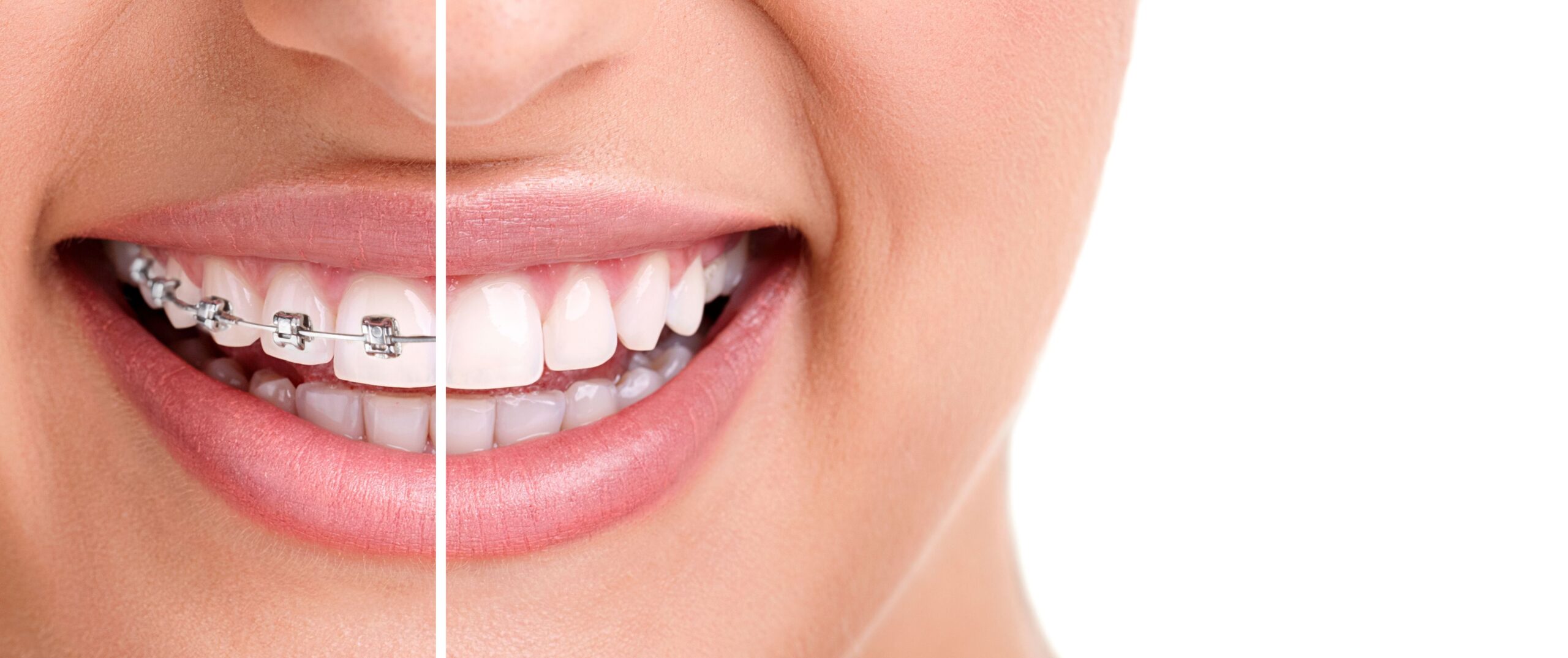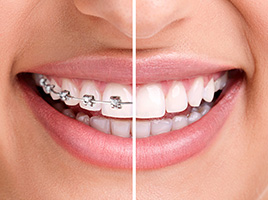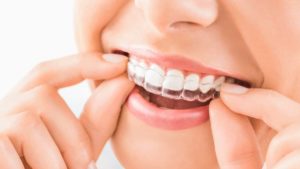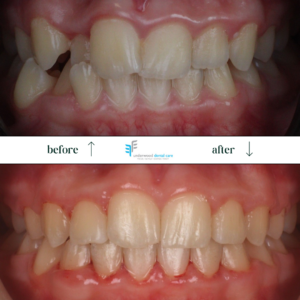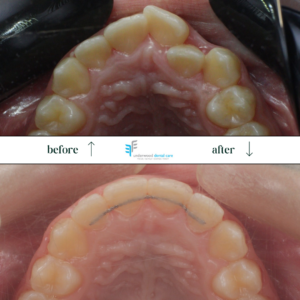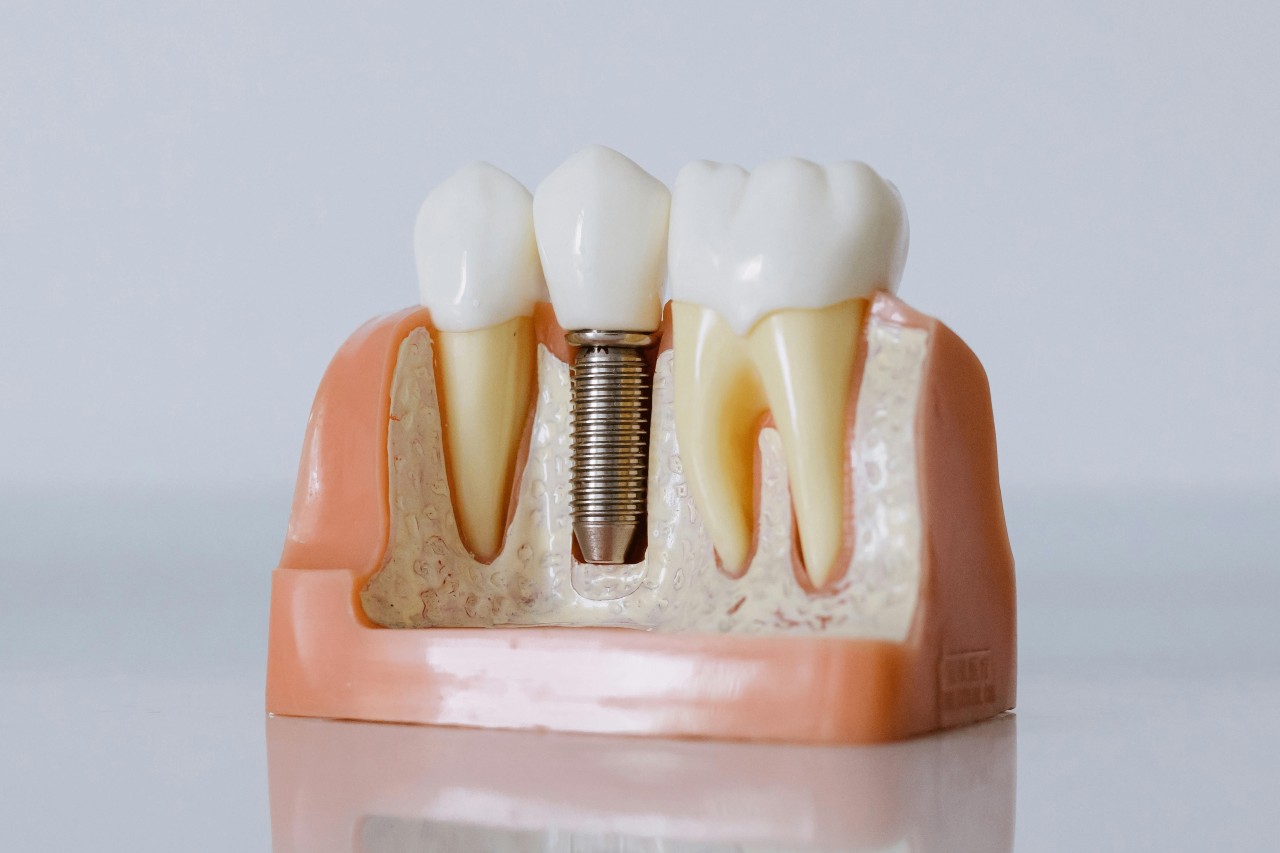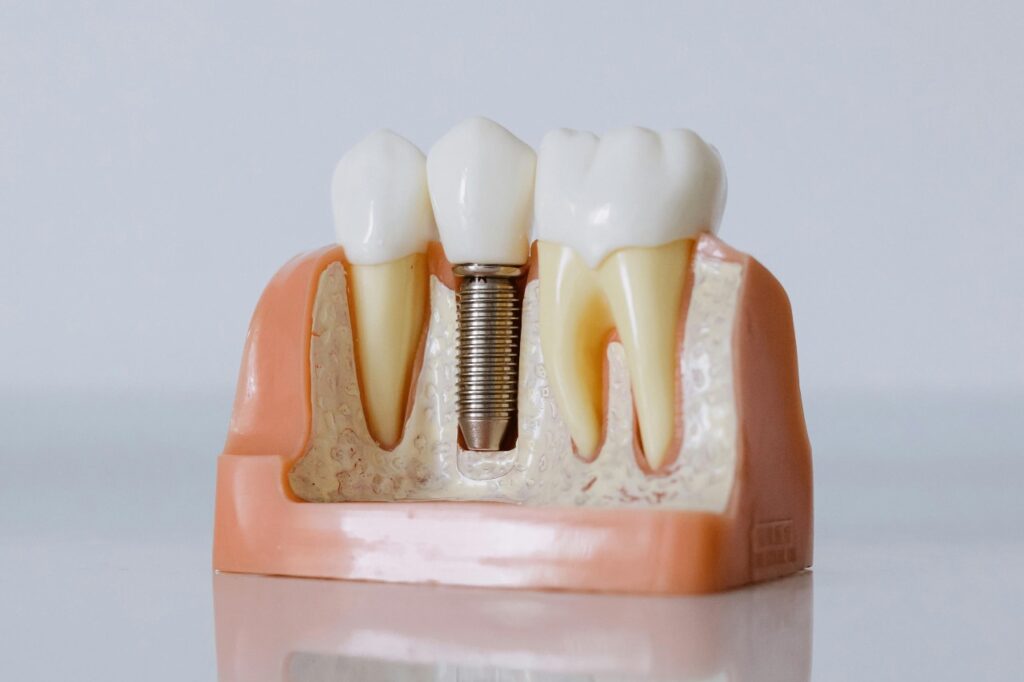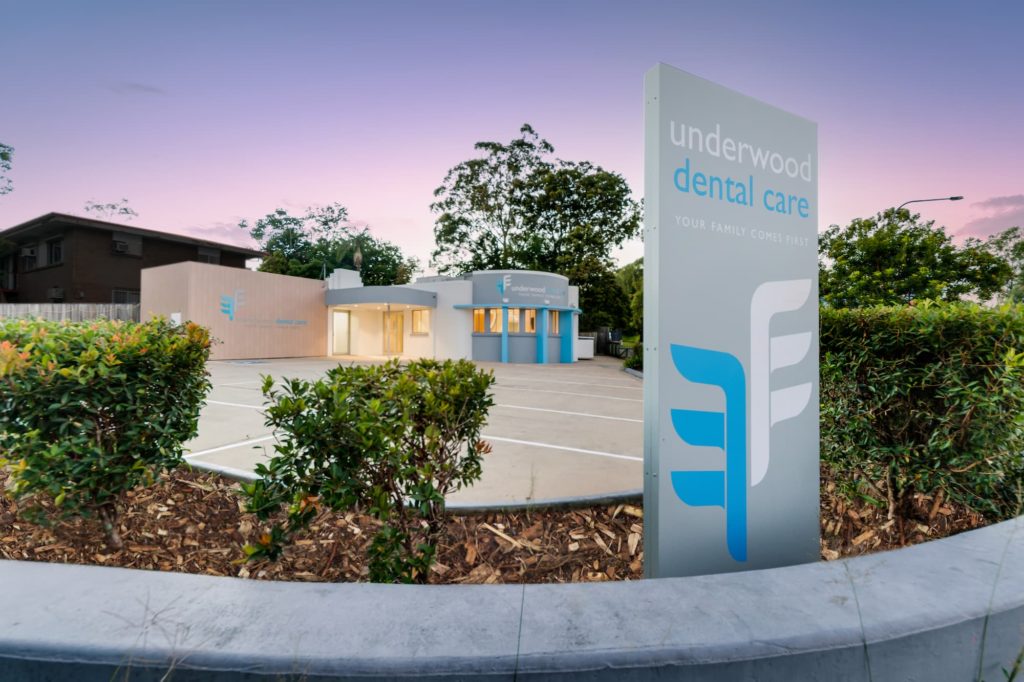Following on from an earlier post on caring for your children’s teeth, I thought it would be useful to touch on the topic of tooth eruption sequence.
Tooth eruption is the natural process by which teeth emerge through the gums and move into their final position. The eruption of teeth begins in infancy and continues until adulthood.
Importance of Baby Teeth
It’s not uncommon for people to have the idea that it’s not necessary to look after baby teeth because they all fall out anyway.
What many people don’t realise is that often it is a while before these baby teeth “fall out” (exfoliate). Some big problems can arise when baby teeth (deciduous teeth) are lost prematurely, and the space in the arch is lost, leaving insufficient room for the permanent tooth to erupt.
A young patient of mine the other week presented with decay on both his front and back baby teeth. He was 6 years of age. The mother was insistent that these teeth didn’t need to be saved as they would fall out anyway.
With a bit of discussion with both the parent and the patient, we had agreed that the front teeth required no treatment as they would soon become mobile from the erupting central incisors. However, the back teeth would require fillings as the permanent successor wouldn’t be knocking on the door for another 4-6 years. This would maintain the space in the arch, rather than allowing further decay in the teeth which may eventuate in early extraction.
The Stages of Tooth Development
If you’re a parent tracking your child’s dental milestones, or an adult who is curious about your own dental development, this guide is for you.
From baby teeth to adult teeth, I’ll explain the crucial stages of tooth development. I’ll also address some common concerns I hear from patients and offer some practical tips to track tooth development progress.
Tooth Eruption
Tooth eruption is a natural process where teeth emerge through the gums. It typically begins with baby teeth and transitions to permanent teeth. Understanding this process helps in anticipating each stage of dental development.
The sequence of tooth eruption is quite predictable but it is normal for things to vary a little bit from one person to another. So if you’re a parent who is concerned that development doesn’t exactly follow the diagram showing the tooth eruption sequence, don’t despair. Everything may be completely normal and I would suggest chatting with your dentist if you are concerned.
Here’s a quick summary of what normally happens with the tooth eruption sequence.
Primary Teeth
Primary Teeth begin at around six months of age and include incisors, canines, and molars. All these teeth play a crucial role in chewing and speech development. They also hold the space needed for the permanent teeth that eventually replace them.
Maintaining good oral hygiene throughout all stages of eruption pays dividends for long term oral health. Good hygiene plays a crucial role in preventing cavities and a wide range of other dental issues. Taking care of teeth during childhood also sets up positive habits that last a lifetime.
The other healthy habit to develop in childhood is visiting a dentist for regular dental check ups. Your dentist can not only monitor teeth health but also ensure tooth development is progressing well.
The Queensland Government health advice is to take your toddler for their first dental visit soon before their second birthday.
The Order of Primary Teeth
The complete set of primary teeth (also known as baby teeth) includes 20 teeth that emerge in a predictable sequence.
More often than not, the lower central incisors are the first to erupt. This is the common starting point for most infants but as I mentioned earlier, it is not a huge worry if this isn’t what you’ve observed with your child. After the lower central incisors emerge, the upper central incisors are typically next to make an appearance.
This is the typical baby teeth order we expect to see:
- Central incisors: Lower first, then upper.
- Lateral incisors: Upper, followed by lower.
- First molars: Upper and lower appear around the same time.
- Canines (cuspids): Develop after the first molars.
- Second molars: Usually the last to emerge.
The different types of teeth each have a specific role. The incisors help bite into food and then the molars grind it down for easy digestion. The role of canines is tearing and cutting food during chewing.
The primary teeth also guide the permanent teeth into their correct positions. Proper alignment is not just nice for a pretty smile. Proper alignment of teeth is crucial for chewing and speaking.
Visiting a dentist regularly is great, but if you are a parent you can also monitor your child’s tooth eruption sequence. I just want to reinforce that there are normal variations with development. Please consult a dentist though if you are concerned about delayed eruption or early eruption because sometimes it can indicate underlying issues that require treatment.
This Teething Brochure from Qld Health (PDF) recommends that children have all their baby teeth by 3 years of age.
For patients who have visited me regularly since they were children it’s been very easy to track the progress and development of their teeth. I would encourage you to maintain consistent dental visits for your children too.
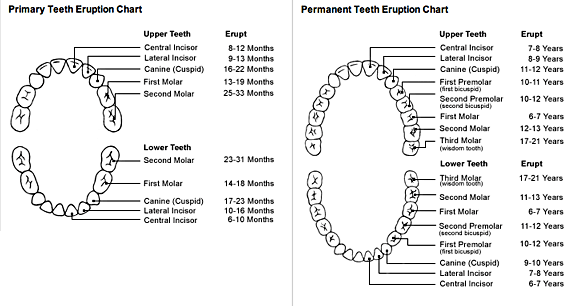
Permanent Teeth
Permanent teeth start replacing baby teeth around the age six. As the primary teeth fall out (exfoliate), they make way for the permanent set of teeth more commonly called adult teeth. The transition from baby teeth to adult teeth is a normal and essential phase in dental development.
The sequence of emergence of permanent teeth is more extended than with primary teeth. With permanent teeth it’s the molars and lower central incisors that are the pioneers. They help set up the mouth for the rest of the permanent teeth.
Below is an overview of the typical eruption sequence of permanent teeth we expect to see:
- First molars and lower central incisors: Age 6-7
- Upper central and lower lateral incisors: Age 7-8
- First premolars: Age 9-11
- Second premolars and canines: Age 10-12
- Second molars: Age 11-13
- Third molars (wisdom teeth): Age 17-25
Your permanent teeth are designed to last a lifetime and they are stronger and more durable than primary teeth. It’s so important to have healthy oral hygiene habits developed by this age because proper care during and after the transition to permanent teeth can prevent future dental issues.
It’s also ideal to have a trusted dentist by this age to help monitor the alignment and growth of permanent teeth. Continuing regular dental check ups through these late childhood and teenage years will ensure your dentist can spot any misalignments or potential issues early.
If alignment issues are present for older children or young adults, we often discuss orthodontic treatments such as braces to help improve oral function, not just aesthetics. That said, braces or aligners (e.g. Invisalign) are always an option for adults too.

Normal Variations & When to Have Concerns
The tooth eruption process can differ significantly among children and still be considered as “normal”. That’s because while there is a general sequence we expect to see, the timing can vary. It’s common and not always a cause for concern when some children experience delays with tooth eruption or earlier than expected eruption times.
Causes of Delays with Tooth Eruption
There are a range of causes for delayed or early tooth eruption and it’s genetics that tend to play a key role. The other major factors that can affect timing of eruption are nutrition and general, overall health. Even when tooth eruption occurs outside the expected time or out of sequence, it may not be a cause for concern.
When I’m checking teeth development in children, I only get concerned when there is significant crowding or misalignment because of teeth erupting out of sequence. Otherwise there is usually not much to worry about with out of order sequence.
So if you have concerns, visiting your dentist is the best option. Your dentist can chat with you about your concerns and explain early intervention options such as orthodontic treatment if required. A good dentist will explain all your options so you can make an informed decision with confidence.
Caring for Teeth During Early Stages of Eruption
Cleaning teeth and gums and maintaining good oral hygiene is crucial from very early childhood. Even before teeth appear, I encourage parents to gently clean their baby’s gums. This prepares the mouth for healthy tooth emergence.
Once you see teeth begin to erupt you can start using a soft-bristled toothbrush to gently clean the teeth surfaces. Using water on the toothbrush is sufficient for babies.
As you see more teeth emerging, you can increase brushing to twice daily with a small smear of toothpaste. Be sure to choose an age appropriate toothpaste that contains fluoride.
Regular dental check ups are the other essential during childhood. When a dentist can monitor progress they can help catch any potential issues early on.
Please also remember that diet also plays an important role in dental health even at an early age. If you can limit sugary foods and drinks like juice or soft drinks you will help prevent decay.
Here’s a simple guide for caring for your children’s teeth throughout their childhood:
- Gums (before teeth erupt): Clean with a damp cloth
- Emerging teeth: Use a soft bristled toothbrush with water
- Full set of baby teeth: Brush at least once (up to twice a day) with fluoride toothpaste
- Transition to permanent teeth: Continue regular brushing and begin regular flossing

The Role of Nutrition and Health in Tooth Development
I briefly mentioned earlier that good nutrition plays an important role in dental health. Essential vitamins and minerals support strong, healthy teeth. For example, calcium and vitamin D are very important for promoting healthy growth.
Proper hydration also promotes healthy dental development. Drinking water helps wash away food particles and bacteria and promotes saliva production. Saliva is nature’s way of protecting the mouth.
When to Seek Professional Dental Advice
Monitoring tooth development is a good reason to ensure your children regularly visit a dentist. If there is delayed eruption then a dentist can evaluate if intervention is needed but often no intervention is necessary.
Children suffering a degree of pain or swelling during tooth eruption is also normal. If the pain or swelling endures though please see a dentist because it may indicate infection.
Whether you have concerns or not, regular dental visits are important, even for young children. Your dentist can help track tooth development for your child and ensure teeth are growing well.
Monitoring Milestones of Dental Development
If you’re a parent I hope this article has helped give you more information on tooth eruption sequence and the milestones of dental development.
If you have any concerns I suggest not losing any sleep over it. Simply book an appointment at your local dentist and get a professional opinion. You are welcome to visit Underwood Dental Care and we offer dental care for children of all ages.
Article by Dr Ben Thai (Principal Dentist at Underwood Dental Care)
You can follow Dr Ben Thai on Instagram ![]()






